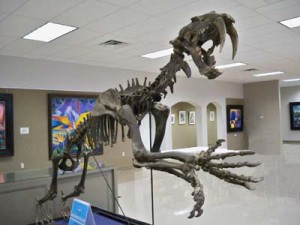What makes Florida a fascinating place to study is the time depth of the region’s heritage. Ten thousands years of archaeology stretching back to the Paleo-Indian hunters, and over five hundred years of written documents starting with Ponce de León and the Spanish Conquistadors, means that we are always finding new discoveries. Recently in St. Augustine archaeologists found the skeleton of a horse from the Second Spanish Period of Florida (1784-1821). You can read more at…
New Historian: “Colonial-era Horse Skeleton Found in St. Augustine”
Of course, the horses introduced by the Spaniards to the Americas starting in the late fifteenth century were not the first horses to gallop around the continent. America’s original horse inhabitants went extinct around 12,000 years ago, about the same times as the megafauna such as the Mammoth, Mastodon, Saber-toothed Cat, and Giant Beaver. You can learn more about the megafauna at the PBMNH’s Expedition Ice Age Exhibit, currently showing at the Plantation Historical Museum.


